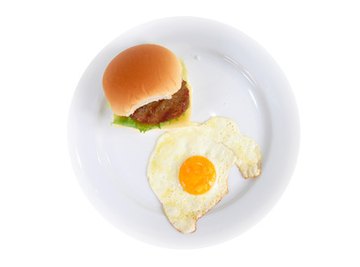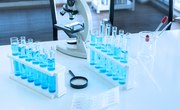
When you eat a meal, you take in three types of macromolecules: carbohydrates, proteins and fats. Different parts of your digestive system break down these complex molecules into their basic components. One organ that helps your body break down fats is the gallbladder.
Identification
The gallbladder lies below and behind the liver. At its base, the gallbladder resembles a large bulb. As it reaches the bile ducts, it narrows down until it turns into the series of tubes that compose the bile ducts.
Function
The main function of the gallbladder is the storage of bile salts that the liver produces. Bile salts are crucial for the breaking down of fats into their basic components. These components include cholesterol and fatty acids.
Bile Ducts
During the process of digestion when fats reach the small intestine, the bile salts stored in the gallbladder are squeezed through a special series of tubes called bile ducts. This allows the bile salts to interact with the fats in the partially digested food traveling through the small intestine.
Time Frame
The gallbladder begins to secrete bile salts into the bile ducts several minutes after the consumption of a meal. This occurs during the time the food in the stomach is soaking in hydrochloric acid (HCL). The HCL causes another chemical messenger, CCK, to bind to special CCK receptor sites located on the gallbladder. When this happens the smooth muscles on the gallbladder contract and all of the bile salts are forced into the bile ducts and into the small intestine where they can do their job.
Gallstones
Gallstones are the most common gallbladder disorder. Gallstones form when liquid stored in the gallbladder hardens into pieces of stone-like material. These stones prevent the bile from excreting properly through the bile ducts and, when severe enough, cause severe pain. The exact cause of gallstones is unknown. There are several risk factors for developing gallstones including gender, family history, weight and diabetes.
A common treatment for a severe case of gallstones is a cholecystectomy, the surgical removal of the gallbladder.
References
About the Author
Kelley Boles obtained his B.A. in writing from the University of Central Arkansas in 2005. He has been a freelance writer within his community ever since. His most ambitious project today has been the writing of a comprehensive assembly manual for BBQ smokers manufactured by Royal Oak Enterprises LLC.
Photo Credits
fat-food image by Vinicius Tupinamba from Fotolia.com
